Former tobacco factory gains new focus as Taiwan Design Museum
Besides the many exhibits, which offered more than most visitors’ eyes and minds could take in, the venue itself is worthy of closer appreciation. The Expo was held in the former Songshan Tobacco Factory, a state-of-the-art industrial facility when it was built in the 1930s near the end of the Japanese Occupation. Its style is a mix of Japanese, European, and American styles, as it was built by the Taiwan Sotokufu Monopoly Bureau, which sent officials to learn more about architecture in those continents. The factory was constructed based on the concept of an industrial village, and it is one of the few industrial buildings which remain from that epoch. The origins of the Taiwan Design Museum Of the sites being examined, the Songshan Tobacco Factory was the largest in area, with buildings that were in good shape and a stunning garden. Art critic Huang Hai-ming had already envisioned the potential of the factory as an art site. Not surprisingly, the group of experts came to a very culture-sensitive conclusion: to preserve the sites as much as possible in green, the best approach for a densely-populated metropolitan area like Taipei. In 2001 the Songshan Tobacco Factory was designated the 99th municipal historical site by the Taipei City Government. Among all the original structures of the factory, the office building, tobacco works, boiler room, and warehouses 1 to 5 were designated as the main body of the historical site. Earlier last year a Build, Operate and Transfer (BOT) contract was signed, and restoration work was underway. Meanwhile, in September 2009 Taipei City also won the privilege to host the 2011 International Design Alliance (IDA) World Congress. This will mark Taiwan's - and Asia's - first time to hold the longest-running and most authoritative international design event. A Boon to Design “The restoration work was carried out well. They kept a bit of the tubing, and electric wires here and there, and the marks on the wall. It has been nicely done,” said Hong, whose work ‘Silent Prayer’ was shown at the Expo in the Theme Pavilion. “It (Taiwan Design Museum) is a lot different from Huashan Creative Park. We didn’t have a space like this to make exhibitions before,” added Hong as she praised the fountain in the ‘Baroque Garden’. ‘Silent Prayer’ sat in a quiet corner in the Theme Pavilion where works from 51 Taiwanese designers in various fields were shown. Hong is known for her innovative designs utilizing the ancient fabric ‘Gambiered Canton Gauze’, a kind of hand-made silk. French critic Henri Roussel called the fabric “Hong Silk” as her particular recipe for fusing oriental and western as well as classic and modern styles in fashion. The fabric is first hand-sewed, and then dyed with juice of Dioscorea cirrhosa, a species of yam, followed by dyeing with mud. It is then laid out on a meadow under the sun before it is sent for finishing. Spreading out the 20-meter long swath of Hong Silk which she used to make ‘Silent Prayer’, an array of mud-colored emblems appears on the fabric. “I made this stitch by stitch, like I was saying my prayers. Altogether the marks compose a letter, or a poem. Zyl cared for me and my career, and I am grateful to her,” she explained. In addition to the textile sculpture and hand-made fabric, Hong’s corner also showed a video clip made by Cheng Yu-hsiang. He filmed dancer Wu Jian-wei dancing in Hong’s work at the corner. Thus visitors could also see how it is like when someone is wearing the textile sculpture and dances in it. Hong envisioned that the 20-meter fabric would be spread out like a painting in subsequent exhibitions. Top designers like her are always active, full of ideas for things coming next. At the Expo, the Theme Pavilion included works from all 51 designers, thus each creator was given a comparatively limited space to place their work. The first design expo was held in Huashan Creative Park shortly after its refurbishment was completed, and Hong was a participating artist. As Taiwan’s creative talents grow year by year and are winning greater international acclaim, holding a mega event such as the IDA Congress is likely to gain even more exposure for local design circles. “Taiwan has never held a large-scale congress like this one. I think finding suitable exhibitors to come will be the key to success,” Hong said. The designer also believes that if artists in various fields can set up their studios in the Taiwan Design Museum, it will become a treasure of Taiwan’s art and cultural circles, as there are few place like that to be found anywhere now. “They have to keep up the good job on preservation, and not further divide the place into more small pieces. It has the potential to be a cluster of the best creative talent in Taiwan,” she added. Themed "Design at the Edges", the 2011 IDA Congress is slated for October next year. The organizer, Taiwan Design Center, expects more than 3000 designers from 60 countries to gather in Taipei for the congress.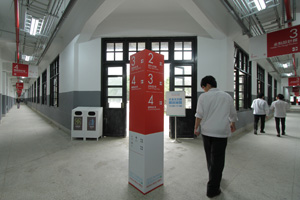 As a warm-up trial for the International Design Alliance Congress next year, the just-concluded Taiwan Design Expo drew more than 230,000 visitors in a 9-day run. This year’s Expo, the eighth since the first one in 2003, featured the theme of Design Beneficence and showcased 1,463 works from 630 exhibitors in 10 pavilions.
As a warm-up trial for the International Design Alliance Congress next year, the just-concluded Taiwan Design Expo drew more than 230,000 visitors in a 9-day run. This year’s Expo, the eighth since the first one in 2003, featured the theme of Design Beneficence and showcased 1,463 works from 630 exhibitors in 10 pavilions.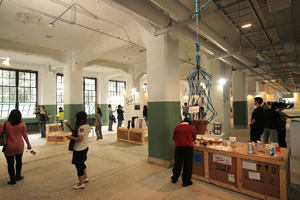 Taiwan's tobacco monopoly system was set up in 1905, the 38th year of the Meiji Reign of the Japanese colonial period. The Taipei Tobacco Factory was the only plant for tobacco manufacturing until an increasing demand for tobacco called for the opening of another facility. The Songshan factory was the answer, and served until it ceased operations in 1998. A changing climate of opinion led to the opening of the cigarette market to imports, and re-organizing the Taiwan Tobacco and Wine Monopoly Bureau as the Taiwan Tobacco and Liquor Corporation. Three years later the Taipei City government named Songshan Tobacco Factory as the city’s 99th municipal historic site.
Taiwan's tobacco monopoly system was set up in 1905, the 38th year of the Meiji Reign of the Japanese colonial period. The Taipei Tobacco Factory was the only plant for tobacco manufacturing until an increasing demand for tobacco called for the opening of another facility. The Songshan factory was the answer, and served until it ceased operations in 1998. A changing climate of opinion led to the opening of the cigarette market to imports, and re-organizing the Taiwan Tobacco and Wine Monopoly Bureau as the Taiwan Tobacco and Liquor Corporation. Three years later the Taipei City government named Songshan Tobacco Factory as the city’s 99th municipal historic site.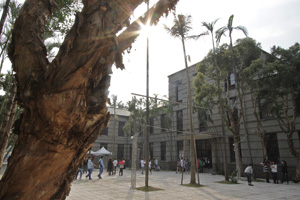 At about the same time the staff was bidding farewell to the factory, a group of people from cultural, design, and urban planning circles gathered to make on-site surveys and propose ideas on the fate of three industrial sites in Taipei, including the Songshan Tobacco Factory. As a detailed feature story in Taiwan Panorama on the factory’s history discloses, “It was the first time that modern-day citizens of Taipei and members of the cultural community had entered the tobacco factory's big gates.”
At about the same time the staff was bidding farewell to the factory, a group of people from cultural, design, and urban planning circles gathered to make on-site surveys and propose ideas on the fate of three industrial sites in Taipei, including the Songshan Tobacco Factory. As a detailed feature story in Taiwan Panorama on the factory’s history discloses, “It was the first time that modern-day citizens of Taipei and members of the cultural community had entered the tobacco factory's big gates.”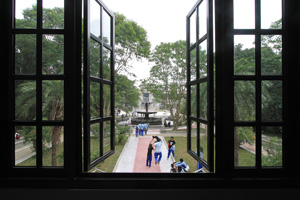 Various plans for the site were proposed and discussed during the 1980s and 1990s, including turning it to a "Sun Yat-sen Campus" or a multi-purpose “big dome”. As time went by, the discussions went on and on without reaching a consensus shared by all until a resolution came up to divide the site in two, with one section devoted to culture and ecology preservation, and the other to sports and leisure.
Various plans for the site were proposed and discussed during the 1980s and 1990s, including turning it to a "Sun Yat-sen Campus" or a multi-purpose “big dome”. As time went by, the discussions went on and on without reaching a consensus shared by all until a resolution came up to divide the site in two, with one section devoted to culture and ecology preservation, and the other to sports and leisure. In the eyes of top Taiwanese designer Sophie Hong, the Songshan Tobacco Factory has been tastefully preserved.
In the eyes of top Taiwanese designer Sophie Hong, the Songshan Tobacco Factory has been tastefully preserved. Subtitled “A Letter to Zyl”, Hong’s work contains a subtext for those who know a little bit about her. Françoise Zylberberg, who passed away in August, was Hong’s life partner for 20 years. ‘Zyl’ taught French at National Taiwan University for more than two decades and started the first and only French bookstore Le Pigeonnier in Taipei.
Subtitled “A Letter to Zyl”, Hong’s work contains a subtext for those who know a little bit about her. Françoise Zylberberg, who passed away in August, was Hong’s life partner for 20 years. ‘Zyl’ taught French at National Taiwan University for more than two decades and started the first and only French bookstore Le Pigeonnier in Taipei.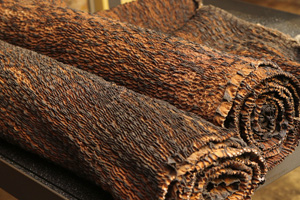 “The dancer is a moving artwork. Furthermore, it was not only my work showing there, Cheng and Wu were also making their works, and we learned from each other,” said Hong.
“The dancer is a moving artwork. Furthermore, it was not only my work showing there, Cheng and Wu were also making their works, and we learned from each other,” said Hong.
Information:
Visit http://shawnstudio.blogspot.com/ to see a one minute trailer of Cheng Yu-hsiang’s film on Sophie Hong’s work.

![Taiwan.gov.tw [ open a new window]](/images/egov.png)
